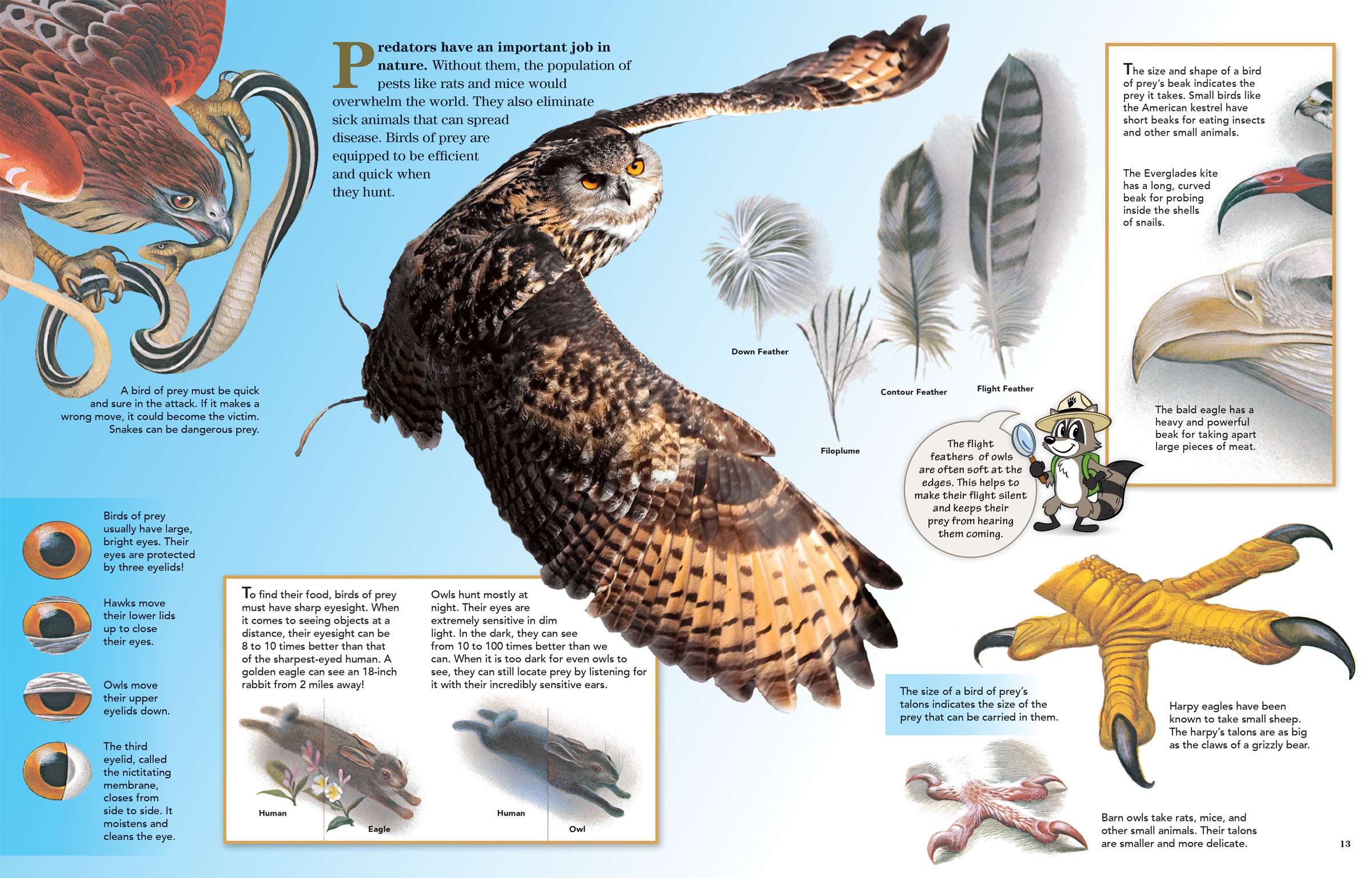
Tools for Hunting
ByPredators have an important job in nature. Without them, the population of pests like rats and mice would overwhelm the world. They also eliminate sick animals that can spread disease. Birds of prey are equipped to be efficient and quick when they hunt.
A bird of prey must be quick and sure in the attack. If it makes a wrong move, it could become the victim. Snakes can be dangerous prey.
Birds of prey usually have large, bright eyes. Their eyes are protected by three eyelids!
Hawks move their lower lids up to close their eyes.
Owls move their upper eyelids down.
The third eyelid, called the nictitating membrane, closes from side to side. It moistens and cleans the eye.
To find their food, birds of prey must have sharp eyesight. When it comes to seeing objects at a distance, their eyesight can be 8 to 10 times better than that of the sharpest-eyed human. A golden eagle can see an 18-inch rabbit from 2 miles away!
Owls hunt mostly at night. Their eyes are extremely sensitive in dim light. In the dark, they can see from 10 to 100 times better than we can. When it is too dark for even owls to see, they can still locate prey by listening for it with their incredibly sensitive ears.
The flight feathers of owls are often soft at the edges. This helps to make their flight silent and keeps their prey from hearing them coming.
Down Feather
Filoplume
Contour Feather
Flight Feather
The size and shape of a bird of prey’s beak indicates the prey it takes. Small birds like the American kestrel have short beaks for eating insects and other small animals.
The Everglades kite has a long, curved beak for probing inside the shells of snails.

The bald eagle has a heavy and powerful beak for taking apart large pieces of meat.
The size of a bird of prey’s talons indicates the size of the prey that can be carried in them.
Harpy eagles have been known to take small sheep. The harpy’s talons are as big as the claws of a grizzly bear.
Barn owls take rats, mice, and other small animals. Their talons are smaller and more delicate.

